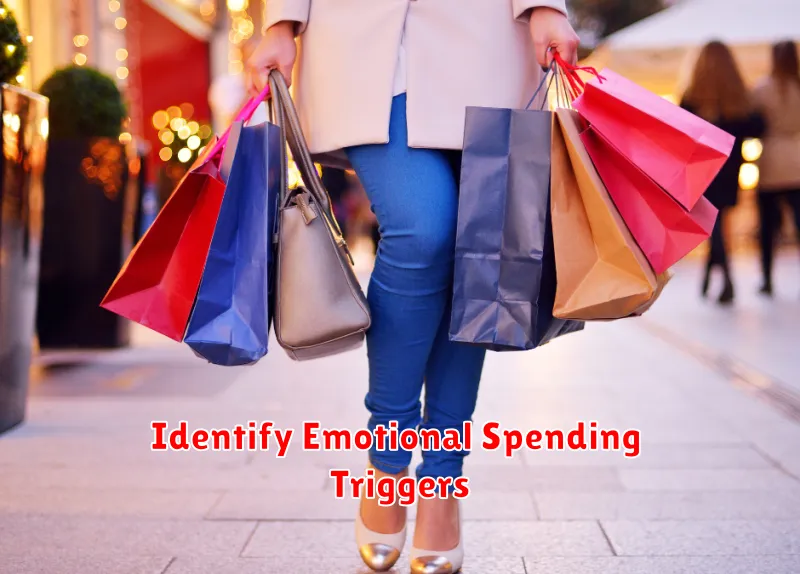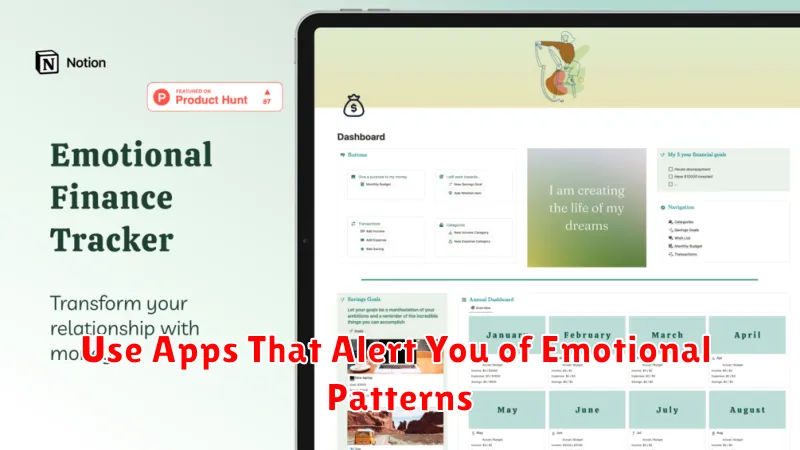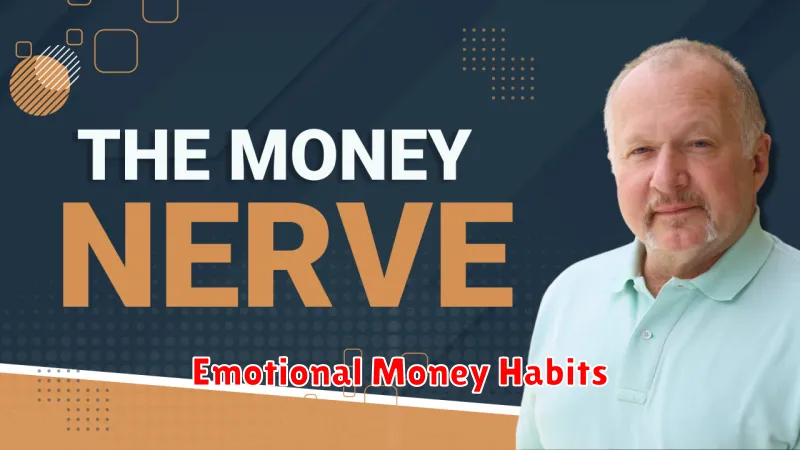Are you struggling with emotional spending? Do you find yourself making impulsive purchases when feeling stressed, sad, or anxious? This article will help you recognize the signs of emotional spending and provide practical strategies to replace this harmful habit with healthier coping mechanisms. Learn how to break the cycle of emotional spending and gain control over your finances by understanding the underlying emotional triggers and developing effective budgeting techniques. Discover how to achieve financial freedom by managing your emotional spending habits.
Identify Emotional Spending Triggers

Understanding your emotional spending triggers is crucial to breaking the habit. These triggers are specific emotions or situations that prompt impulsive purchases. Common triggers include stress, sadness, boredom, and loneliness. Identifying these feelings is the first step towards managing them.
Consider keeping a spending journal. Note down your purchases, the amount spent, and most importantly, how you were feeling at the time of purchase. Look for patterns. Did you spend more after a stressful day at work? Did you buy something to cheer yourself up after an argument? Recognizing these connections reveals your personal spending triggers.
Beyond specific emotions, certain situations can also trigger emotional spending. This could include seeing a sale, browsing social media, or being around friends who spend freely. Become aware of these external factors that influence your spending habits.
Once you’ve identified your triggers, you can begin to develop strategies to manage them. This might involve practicing stress-reducing techniques, seeking social support, or changing your online browsing habits. The key is to build self-awareness and create a plan to address the underlying emotional needs instead of resorting to spending.
Keep a Spending Diary with Emotions Logged
Tracking your spending is crucial for understanding emotional spending habits. A simple spending diary isn’t enough, however. To effectively address the root cause, you need to log your emotions alongside each purchase. This involves honestly reflecting on how you felt before, during, and after making each purchase.
Use a notebook or a digital spreadsheet to record your spending. For each entry, include the date, the amount spent, what you bought, and a brief description of your emotional state. Consider using a rating scale (e.g., 1-5) for emotions like stress, sadness, happiness, or anxiety. The more detail you provide, the clearer the patterns will become.
Analyzing this diary will reveal correlations between your emotional state and your spending habits. You might discover that you tend to overspend when you feel stressed, lonely, or bored. This awareness is the first step towards developing healthier coping mechanisms and breaking the cycle of emotional spending.
Remember, consistency is key. Make it a daily habit to log your spending and emotions, even if you haven’t made any significant purchases. This regular practice will build self-awareness and help you identify triggers and develop effective strategies to manage your spending in a more conscious and healthy way.
Create a Delay Rule for Emotional Purchases

Emotional spending often stems from impulsive decisions made in the heat of the moment. A delay rule can significantly curb this habit. This involves implementing a waiting period before making any non-essential purchase.
Establish a specific timeframe, such as 24 hours or one week, depending on the purchase amount and your personal discipline. During this waiting period, objectively evaluate the purchase. Ask yourself: Is this item truly necessary? Will it still feel essential after the waiting period? Does the emotional need for this purchase outweigh the financial impact?
Implementing a delay rule empowers you to make more rational decisions. By introducing a time buffer, you provide space for emotions to subside, allowing logic and financial prudence to guide your spending habits. It helps to separate fleeting desires from genuine needs.
Consider using a physical notepad or a dedicated app to track items you want to buy. Write down the item, the date, and your initial emotional reasoning. Reviewing this list after the waiting period offers valuable perspective.
Remember, the goal is not to eliminate all spontaneous purchases; instead, it’s about regaining control and making conscious decisions that align with your financial goals. The waiting period allows you to differentiate between true needs and wants fueled by emotion.
Replace Shopping with Positive Alternatives
Emotional spending often stems from a need for comfort, distraction, or a sense of control. Instead of resorting to shopping, explore healthier alternatives that address these underlying needs.
Exercise is a powerful stress reliever and mood booster. Physical activity releases endorphins, which have mood-lifting effects. A simple walk, a yoga session, or a gym workout can be surprisingly effective.
Creative pursuits can offer a fulfilling outlet for emotional expression. Engage in activities like painting, writing, playing music, or knitting. These activities provide a sense of accomplishment and reduce stress.
Mindfulness and meditation techniques help cultivate self-awareness and emotional regulation. Regular practice can increase emotional resilience and reduce impulsive behavior.
Connecting with loved ones provides social support and reduces feelings of loneliness or isolation, common triggers for emotional spending. Spending quality time with friends and family can be incredibly therapeutic.
Journaling allows for emotional processing and self-reflection. Writing down your thoughts and feelings can provide clarity and help identify triggers for emotional spending.
Replacing shopping with these positive alternatives will not only curb emotional spending but also contribute to improved mental and physical well-being. Experiment with different activities to find what resonates best with you.
Talk to a Trusted Friend Before Buying
Before making a purchase driven by emotion, especially a large one, talk to a trusted friend. This provides an invaluable outside perspective. A friend can offer a rational assessment of your spending, helping you identify if the purchase is truly necessary or simply fueled by fleeting feelings.
They can help you explore the underlying emotions prompting the purchase, such as stress, sadness, or loneliness. This process can lead to healthier coping mechanisms than retail therapy. A trusted friend’s support provides accountability and a sounding board to challenge impulsive decisions, potentially saving you from regret and financial strain.
Choose someone who is supportive but also honest; someone who won’t enable your emotional spending habits but will offer guidance and encouragement to make sounder financial choices.
Practice Self-Compassion When You Slip
Breaking the cycle of emotional spending requires patience and self-understanding. There will be moments when you slip up and engage in impulsive purchases driven by emotion. Instead of succumbing to self-criticism, practice self-compassion.
Acknowledge that setbacks are a normal part of the process. Treat yourself with the same kindness you would offer a friend facing a similar challenge. Avoid harsh judgments and focus on learning from the experience. What triggered the emotional spending? What can you do differently next time?
Self-compassion allows you to move forward constructively rather than getting stuck in a cycle of guilt and shame. This positive self-talk and gentle approach will ultimately strengthen your resolve and contribute to lasting change in your spending habits.
Use Apps That Alert You of Emotional Patterns

Emotional spending often stems from underlying emotional triggers. Utilizing apps designed to track mood and spending habits can provide valuable insights into these connections. Many apps allow you to log daily moods and correlate them with your financial transactions.
By reviewing this data, you can identify patterns: Do you tend to overspend when feeling stressed, sad, or lonely? Recognizing these triggers is the first step toward breaking the cycle. These apps offer a visual representation of your emotional spending, making it easier to spot problematic trends.
Some apps even offer features such as spending alerts, notifying you when your spending exceeds a predefined limit or deviates significantly from your usual pattern, especially during times when you’ve logged negative emotions. This proactive approach allows for immediate intervention and helps prevent impulsive purchases driven by emotions.
The data-driven approach provided by these apps offers a level of objectivity that self-reflection alone may lack. It provides concrete evidence of the link between your emotions and your spending, enabling you to develop more effective strategies for managing your finances and emotional wellbeing.

